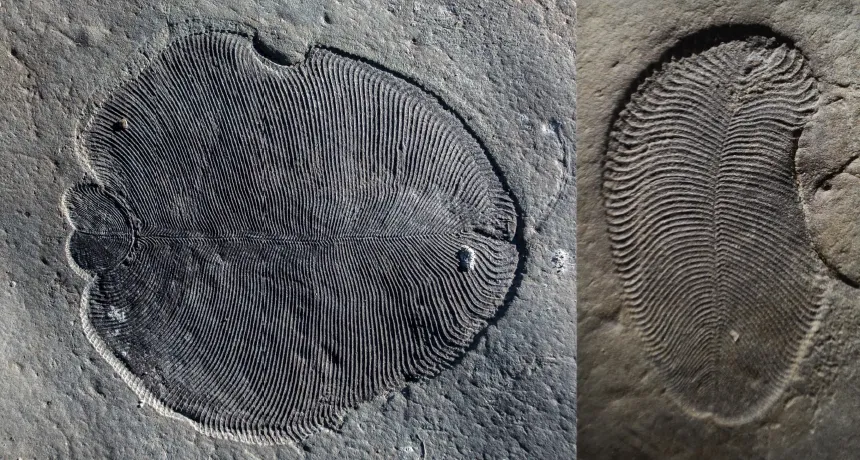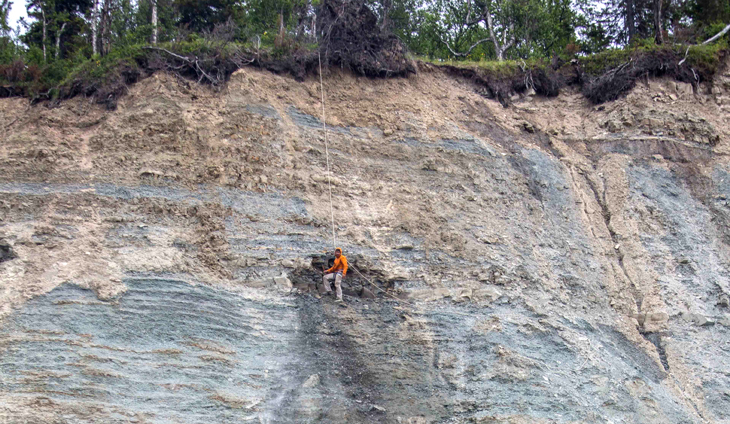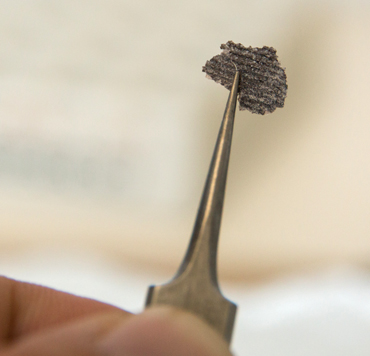Cholesterol traces suggest these mysterious fossils were animals, not fungi
These alienlike organisms lived more than 541 million years ago

ANIMAL, VEGETABLE, MINERAL? Enigmatic, alienlike fossils, which date to between 570 million and 541 million years ago, included different species of the oval-shaped Dickinsonia (shown).
Ilya Bobrovskiy/ Australian National Univ.
Cholesterol clinched it: A group of strange Precambrian fossils are among the oldest known animals in the rock record.
Organic molecules preserved with fossils of the genus Dickinsonia confirm that the creatures were animals rather than fungi or lichen, a study in the Sept. 21 Science says. Researchers led by paleontologist Ilya Bobrovskiy of Australian National University in Canberra analyzed levels of steroids in the fossils, which date to between 571 million and 541 million years ago. The team found an abundance of cholesterol that points firmly to the animal kingdom.
The finding “gets rid of the more outlandish hypotheses about what these objects were,” says MIT geobiologist Roger Summons, who cowrote a related commentary in the same issue of Science. “You can’t argue with chemistry.”
Dickinsonia are part of the enigmatic Ediacara biota, the collective name for a burst of strange, alienlike life-forms that flourished during the Precambrian Eon. Ediacarans, originally named for Australia’s Ediacara Hills, where they were first discovered, are now found in Precambrian-aged rocks around the globe.

That’s particularly helpful when it comes to the Ediacaran fossils, which have proven difficult to place on the tree of life as they bear little resemblance to any known creatures. (SN: 5/18/13, p. 20). The Ediacarans were macrofossils, meaning that, at several centimeters across, they are large enough to see with the naked eye. But their strange shapes — for example, Dickinsonia resemble ribbed ovals that are symmetrical around a central axis — left scientists stumped. Most paleontologists suspected that Dickinsonia were animals. But some scientists argued they could be fungi, lichens or even giant, single-celled creatures called protists (SN: 1/26/13, p. 15).
Biomarkers in the soft tissue, however, provide a new line of evidence. To collect the organic molecules, the scientists removed thin films of organic matter from the rocks, and then extracted the molecules in the lab using solvents. The high-precision work must happen “under extremely clean conditions to avoid contaminants,” says coauthor Jochen Brocks, also of Australia National University.
As a control, the team also extracted organic material from the rocks surrounding the Dickinsonia fossils. Steroids isolated from the surrounding rocks were revealed to be 70 percent stigmasteroid, an organic molecule found in algae. That’s consistent with the likely marine setting for the Ediacara biota: The creatures were thought to dwell in shallow waters, atop microbial mats.
But the fossils themselves were strikingly high in cholesterol relative to other steroids, making up between about 85 percent and 93 percent of all steroids in different fossils of the genus. “The nearly 100 percent proportion of cholesterol in the Dickinsonia fossils tells us it must have been an animal,” Brocks says. Cholesterol is produced by bacteria in the guts of animals.
Next up, the team plans to look for biomarkers from other Ediacarans in the White Sea rocks — and there are plenty of intriguing options, Brocks says. “The coolest target is the rangeomorphs. These weird creatures are constructed like a fractal. No modern animal is built like that.”








